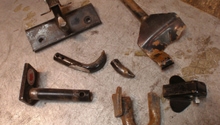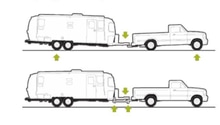Ford F-150/F-250: How to Calculate Tongue Weight
Your Ford F-150 or Super Duty truck is made for heavy towing. However, you need to make sure to set up the right tongue weight to ensure a safe, stable, and comfortable ride.
This article applies to the Ford F-150 (2004-2014) and F-250 Super Duty (2005-2014).
Like riding a bicycle, after towing a few times, it becomes second nature. For those with experience, towing is easy when the tongue weight is correct. Your trailer hitch's tongue is the arm that extends from the trailer and couples with the tow vehicle's receiver. Your tongue weight is the downward force that the tongue of the trailer applies to the hitch of the tow vehicle. If the tongue weight is too light, swaying can occur. If it's too heavy, the steering of the tow vehicle can be affected. In either case, disaster can be just up the road.
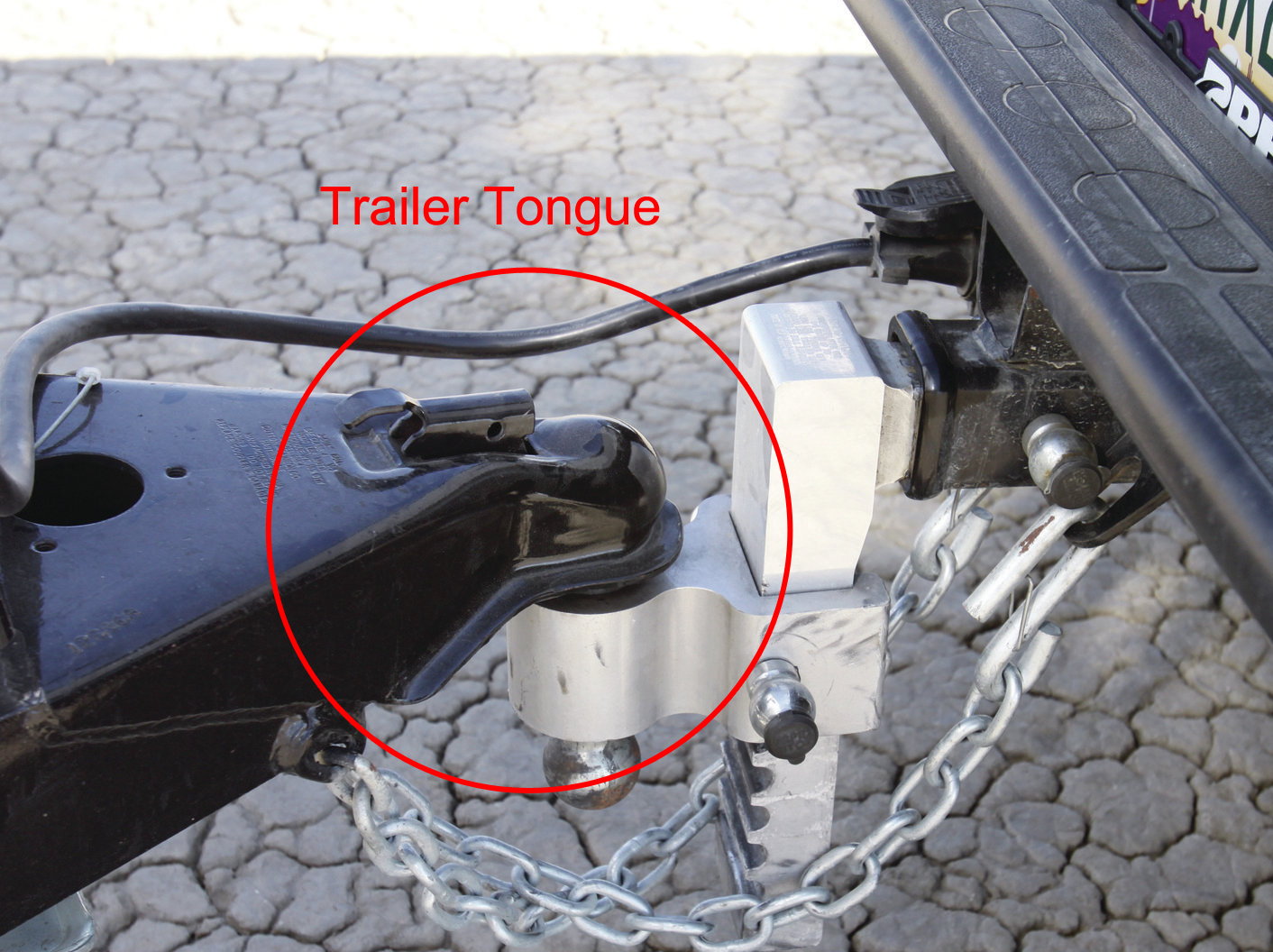
Figure 1. Location of your trailer’s tongue.
According to many experts on this subject, tongue weights should ideally be between 10 and 15% of trailer’s gross weight. This includes everything that will be in or on the trailer as it is being towed. There are several ways to find the tongue weight.

Materials
- Bathroom scale ($8) or Tongue Weight Scale ($130)
- Adjustable sturdy box
- Several 2x4s.
Step 1 - Determine the weight of your trailer

Figure 2. Locating the trailer weight.
The actual trailer weight will be on a placard somewhere on the trailer itself or in the manual that came with the trailer. You can also find out the weight of the trailer on the Internet. Then add whatever is going on or in the trailer, such as a boat, gasoline, batteries, and other equipment.
Step 2 - Measure the height
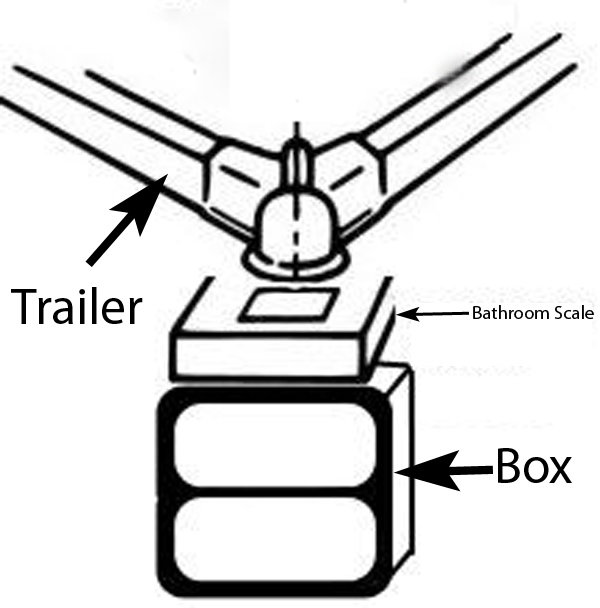
Figure 3. Measure tongue weight. 
Figure 4. Measuring the height of your hitch receiver.
Set up a box and adjust the height with 2x4s to be the same height as your truck’s towing ball. Measure from the ground to the top of the hitch receiver. Then add 3 inches to accommodate the height of the ball.
Place the bathroom scale or the tongue weight scale on the box and then pull your trailer to the box and rest the tongue on it. You can use the bathroom scale if the trailer isn’t too heavy; otherwise, use the tongue weight scale.
Step 3 - Adjust the tongue weight
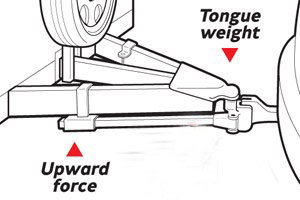
Once you have determined the true tongue weight, then you can decide if it falls within the ideal range of 10 to 15% of the total weight of the trailer and its contents. If it does, then you’re finished here. If it doesn’t, then you can adjust the tongue weight by either moving weight farther behind the rear axle or moving it forward. If your trailer has an adjustable/movable axle, you can adjust the tongue weight by moving it forward or toward the rear of the trailer.
Pro Tip
Too much tongue weight can overload your rear axle or blow a rear tire. However, if the front of the trailer is pointing up, you sacrifice your steering and braking. You want the weight to be as even as possible and as distributed as possible.
Related Discussion and Articles
- Tongue Weight - Ford-trucks.com
- Towing Tips - fourwheeler.com
- How to Tow a Trailer - popular mechanics.com


